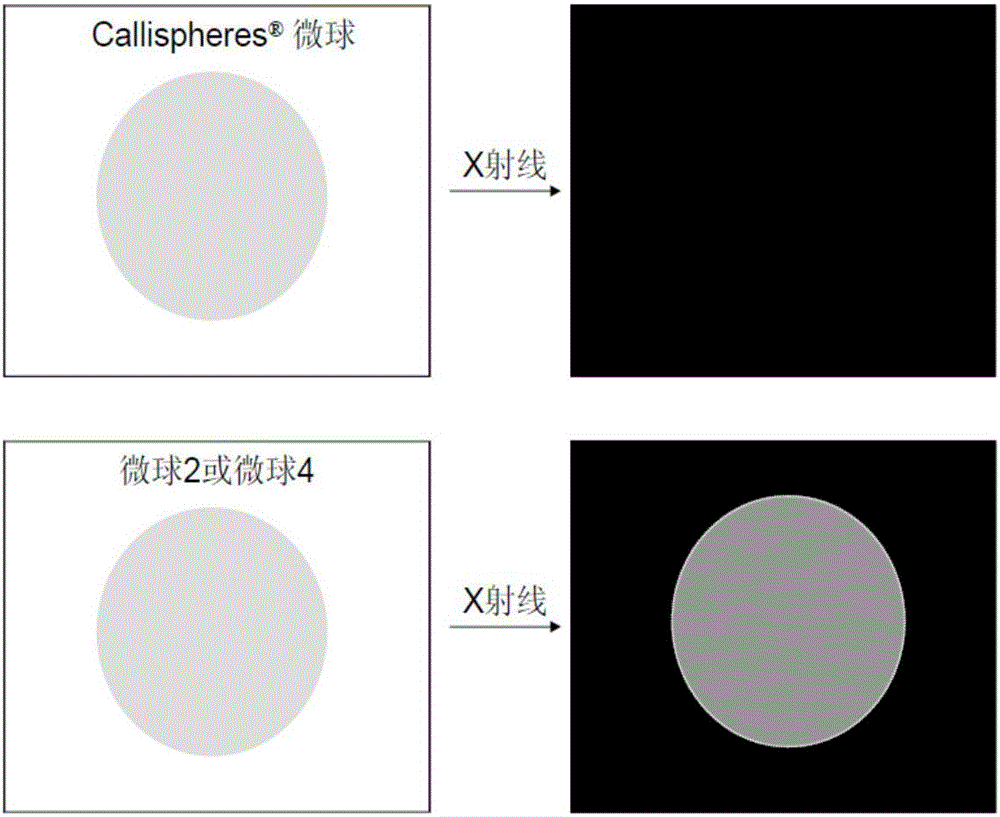Developing embolism microsphere for treating tumor diseases through minimally invasive interventional therapy and preparation method thereof
A minimally invasive intervention and therapy technology, applied in the field of medical materials, can solve the problems of vascular stimulation, cumbersome operation steps, increased difficulty, etc., achieve good scalability and elasticity, reduce surgical risk, uniform and controllable particle size
- Summary
- Abstract
- Description
- Claims
- Application Information
AI Technical Summary
Problems solved by technology
Method used
Image
Examples
Embodiment 1
[0031]
[0032] In a 2L four-necked reaction flask, add 1000g of water and a molecular weight of 5 to 8×10 4 120g of polyvinyl alcohol, heated to 96 ° C for 4 hours, the fully dissolved polyvinyl alcohol solution was cooled to room temperature, and the cross-linking agent acrylamidoacetaldehyde dimethyl acetal (3.66g) and 15.18g of 3 were added successively. 10 mL of dimethyl sulfoxide solution of 5-diiodobenzaldehyde dimethyl acetal, 100 mL of concentrated hydrochloric acid, reacted at room temperature for 6 hours, after the reaction was completed, 560 g of 2.5M sodium hydroxide solution was added, and the collected crude product was concentrated to obtain 450 g of the gel-like functionalized macromolecular intermediate, with a viscosity of 2800 cps, is stored at 5-30°C until use.
Embodiment 2
[0034]
[0035] In a 2L reaction flask, add sodium 2-acrylamide-2-methylpropanesulfonate (19.0g), potassium persulfate (12.0g) and water, mix and stir until potassium persulfate is completely dissolved, then add the obtained function prepared in Example 1 Thin macromolecular intermediate (390g) and stir to obtain macromolecular monomer solution, place for subsequent use. Add butyl acetate (2.5L) and ethyl acetate solution (50g) of 10% butyl acetate cellulose in 5L reactor, feed nitrogen, system temperature rises to 65 ℃ and adds above-mentioned macromolecular monomer solution and four Methylethylenediamine (15 mL), then the reaction was stirred at 65°C for 3 hours. After the reaction, the reaction mixture was washed with butyl acetate and acetone successively, filtered with suction, and dried in vacuum to obtain polyvinyl alcohol embolization microspheres 2 (80 g).
[0036] After being swollen and sieved, the embolization microspheres are round and plump, with a smooth sur...
Embodiment 3
[0038]
[0039] In a 2L four-necked reaction flask, add 1000g of water and a molecular weight of 5×10 4 ~8×10 4 150g of polyvinyl alcohol was heated to 96°C for 4 hours, and the fully dissolved polyvinyl alcohol solution was cooled to room temperature for subsequent use. Add dimethylsulfoxide (10mL), acrylamidoacetic acid (2.02g) and 3,5-diiodobenzoic acid (14.04g) successively into a 25mL three-necked flask, stir to dissolve, then add EDCI (11.58g) and 4-Dimethylaminopyridine (7.56g), then this solution was added dropwise in the above-mentioned dissolved polyvinyl alcohol solution, after the dropwise addition, it was reacted for 16 hours. After the reaction, the crude product collected was concentrated to obtain a gel-like The functionalized macromolecule intermediate 570g, viscosity 2600cps, the intermediate 3 is preserved for later use.
PUM
| Property | Measurement | Unit |
|---|---|---|
| Viscosity | aaaaa | aaaaa |
| Particle size | aaaaa | aaaaa |
| Viscosity | aaaaa | aaaaa |
Abstract
Description
Claims
Application Information
 Login to View More
Login to View More - R&D
- Intellectual Property
- Life Sciences
- Materials
- Tech Scout
- Unparalleled Data Quality
- Higher Quality Content
- 60% Fewer Hallucinations
Browse by: Latest US Patents, China's latest patents, Technical Efficacy Thesaurus, Application Domain, Technology Topic, Popular Technical Reports.
© 2025 PatSnap. All rights reserved.Legal|Privacy policy|Modern Slavery Act Transparency Statement|Sitemap|About US| Contact US: help@patsnap.com



